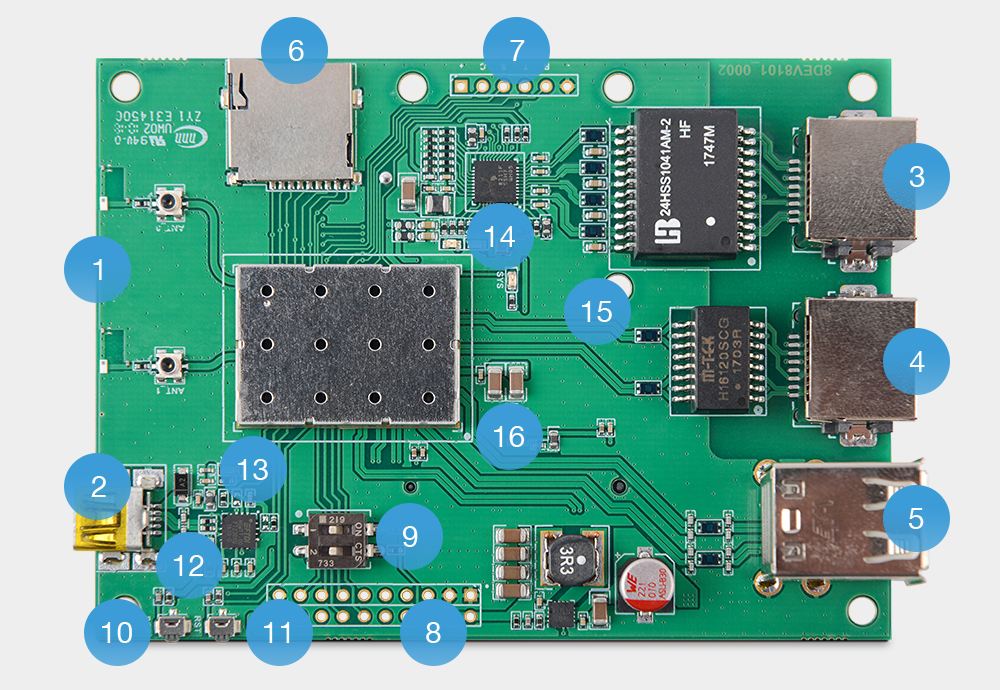Quick User Guide

1 - 2 x Ceramic 2.4 GHz omni-directional antennas
2 - Micro - A USB socket (console +power 5V)
3 - 1000 Base-T LAN port
4 - 100 Base-T LAN port
5 - USB type B (host interface)
6 - SD card slot
7 - SPI/ GPIO pins
8 - GPIO
9 - Boot source selector switch (internal module flash, SD/emmc, USB)
10 - Button (reset to defaults)
11 - Button (hardware reset)
12 - UART RX/TX activity LEDs
13 - Kinkan-DVK power LED
14 - LAN activity LEDs
15 - Programmable system LED
16 - PCIe card activity LED
Power on
One convenient way to power up Kinkan is by connecting it to a USB power source (e.g. your computer) by using a USB to mini USB cable. Alternatively, you may connect it to a 5V 1A power supply. A single LED (named PWR on our development kit) should light up upon powering. Give it at least 30 seconds to boot.
Link up
Now that we powered Kinkan on, let’s connect it via lan port. Configure your computer's network interface with 192.168.1.254 IP address and 255.255.255.0 netmask. Make sure that other devices on your network are not using this subnet! If everything is done correctly you should be able to reach it via the default IP address of 192.168.1.1
Log in
Kinkan is now reachable, so let’s login via ssh:
ssh root@192.168.1.1
Or via telnet:
telnet 192.168.1.1
Or via your internet browser with the following URL:
http://192.168.1.1
By default your device does not have a password set so when logging in only enter username “root” and leave password field empty.